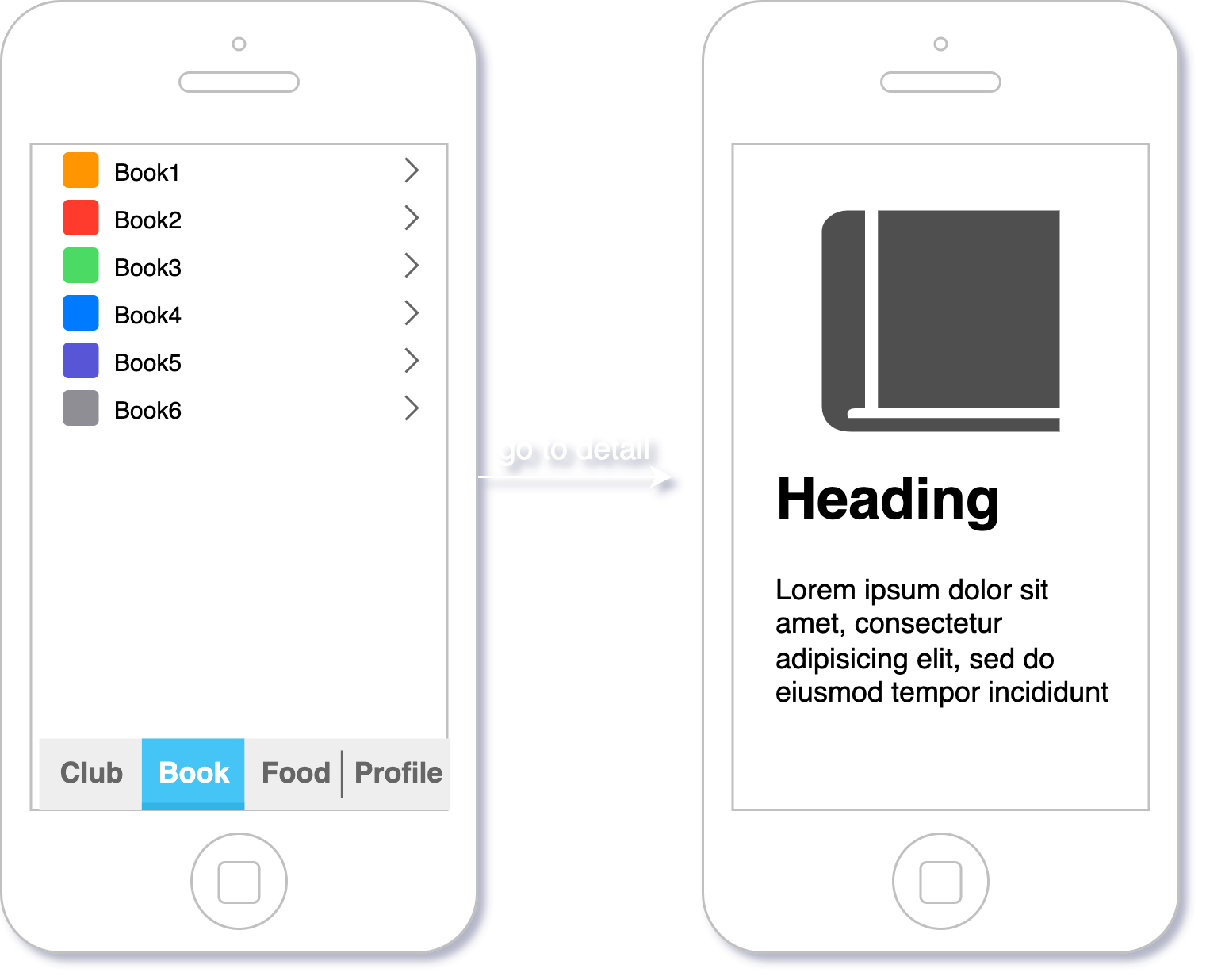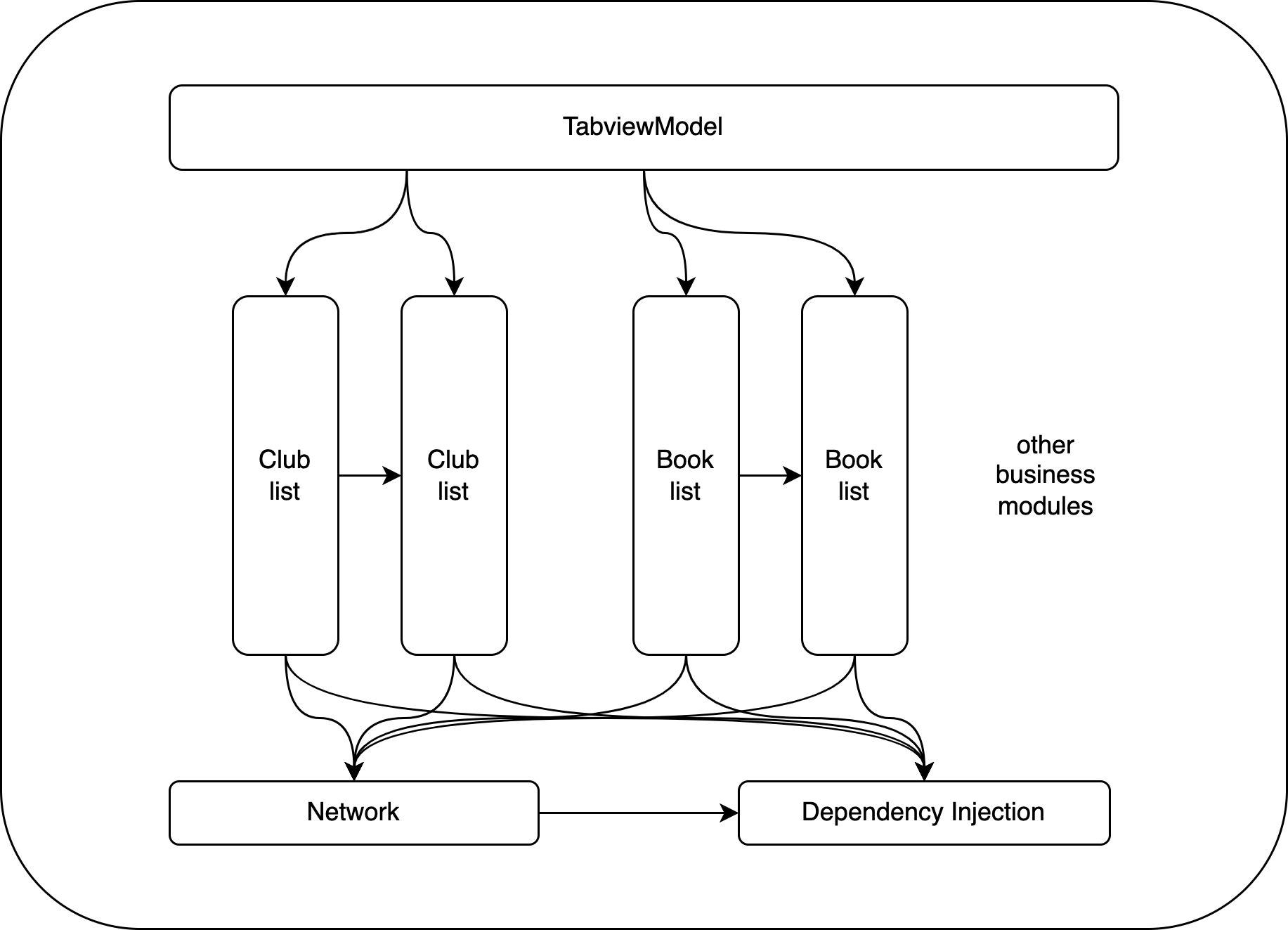How to divide modules
Modules can be divided by different perspective, and usually there are two different perspectives: function and business, from the functional perspective, Network, Dependency injection are different modules, and from the business perspective(shown as below), Club, Book, Food, and Profile are different modules.
There are also some other factors usually being taken into consideration in modules dividing, such as Complexibility, Extension, Cooperation, take Book in the MVP as an example, creating a module named BookModule is a very common practice, but if both List and Detail page are very complicated with lots of fine UI elements, network API, taken by different team or, one of them will be in a Webview some day in future, then two modules of BookList and BookDetail are better choice.
Usually below factors are worth consideration:
- UI complexity
- Extensionbility (may be taken place by a web page?)
- Cooperation (in different team or different team members)
- Function
And of course, divied into finner moduels is always not bad idea

Here are the modules we need in our MVP:
- Network
- Dependency injection
- ClubList
- ClubDetails
- BookList
- BookDetails
- FoodList
- FoodDetails
- Profile
The first two modules are functional modles while the other modules are business related.

How to organize modules
There are two ways we can organize our moduls:
- Xcode project
- Swift package
And some poins we need to take into consideration:
- Configuration
- Unit test
- SwiftUI preview
- Localization
We will use swift pacakge at first for all modules, and it will certainly be good for funtional modules such as Network and Dependency injection, but not sure for other business modules. We can discuss this later.